
The Spark: When others batten down hatches, hoist up the sails
For G4 Kegs, the spark was becoming a new kind of industry leader — one that prioritized meaningful partnerships in a time when the brewing industry was aflame.
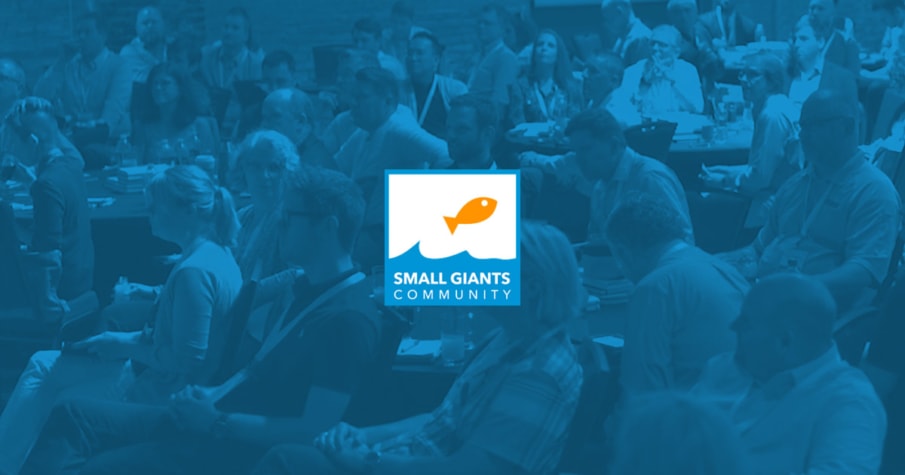
Kinesis is a proud member of the Small Giants Community, an organization of purpose-driven leaders dedicated to building businesses the right way. And last month, we attended their annual Summit in Detroit, Michigan - where we met with like-minded businesses, shared some big ideas, and got to hear from community leaders doing things differently.
The week was filled with insights, and we came back to our Portland office itching to put them into action. In the interest of "Sharing The Good" with our network of business leaders, we've summarized our key takeaways in this week's blog.
Tyler Mongan, Founder of HAKU.global
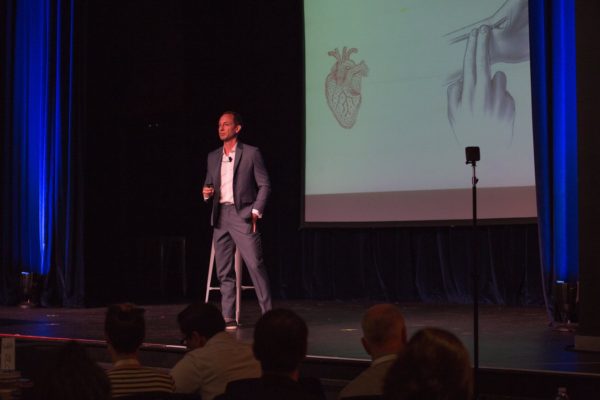
In this interactive workshop, Tyler Mongan taught us that how you show up physiologically as a leader matters more than you think. Research in human physiology is revealing that when the heart and brain are working together, we enter a coherent state and our frame of mind shifts.
He walked us through the unexpected connection between the physical, emotional, and social worlds (which could explain the phenomenon of someone walking into a room and you immediately knowing they're upset). Our heart rhythms and brain waves send out electromagnetic signals to people up to 6-8 feet away - and, in fact, begin to synchronize when we engage in shared activities.
“A new finding in brain science reveals a curious dynamic — a neural synchronization — during communication between leaders and followers: the brain activity of leaders and followers is more highly synchronized than the brain activity between followers and followers.”
"How Leaderless Groups End Up With Leaders”
- Srini Pillay, Harvard Business Review (Feb 19, 2016)
One way for leadership to capitalize on this is to seek a state of Brain Coherence, which is observed by synchronistic brand waves and an increase in alpha waves - resulting in increased neural connectivity, cognitive function, and body control. There are several ways we can encourage brain coherence in our bodies:
He encouraged us to move away from our perceived physiological hierarchy ("This person could kill me, so they - and by extension, their ideas - must be superior to mine") and instead strive for physiological equality. Not only does this improve physiological coherence, it also solves for inequalities like age, gender, etc.
By applying this research, leaders can consistently develop a more authentic context which inspires continual innovation and fosters adaptive and highly collaborative cultures.
Corey Blake, Founder & CEO of Round Table Companies
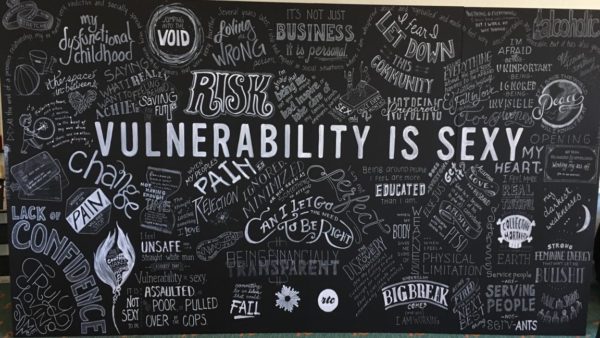
Credit: Corey Blake, Round Table Companies
In this breakout session, Corey Blake shared his provocative company motto - "vulnerability is sexy" - and described how he used this big idea to shape conversations via installations at corporate events. He would have folks write down things that made them feel vulnerable, and submit them anonymously on slips of paper. Professional artists then brought these admissions to life on a large black wall, displayed publicly on the last day of the conference. In this way he created stimulating conversation and authentic connections.
Interestingly, however, corporate art installations are far from the work Round Table does. They are experts in storytelling, bookwriting, and coaching. So why the foray into events? Because it allows the company to express their purpose and process (which can most readily be summarized into "Vulnerability -> Encouragement -> More Vulnerability -> Authenticity") through an immersive user experience. Only once people understand his purpose does he begin a conversation about what he does for a living.
He encouraged his audience to consider a similar approach - and create experiences aligned with your core purpose, rather than your line of work. (As you might imagine, this got the Kinesians excited - since this type of thinking is right up our alley.) He walked us through an exercise wherein we worked to hone in on this core purpose, and thought through how we might invite the community to share in it.
Candice Gouge of Pegasus Logistics, Seth Derner of Vivayic, & Anna Brozek of Big Cartel
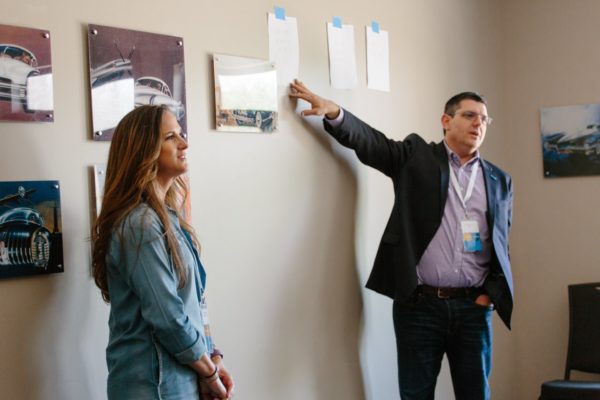
With a digital economy, more and more companies are going virtual - including many Kinesis clients. So, we were excited for this opportunity to learn more about this growing trend - and in particular, how to build and maintain a strong company culture in this environment. Here are some of the tips and tricks we learned:
Ron Alvesteffer, President & CEO of Service Express, Inc.
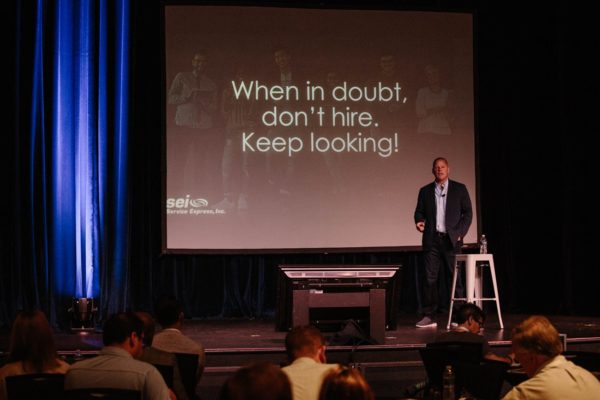
Ron Alvesteffer shared the story of his company, Service Express - and how they've achieved double-digit growth every year since 2001. Essentially, he has worked to help his employees achieve personal, professional, and financial goals which then empower the performance of the company overall.
He does this through a system of very specific employee scorecards:
He also asserted that systems and processes should create freedom by providing guidelines that make work faster and more efficient - it should not feel like red tape. He recommends writing these plans in pencil, as they are designed to grow and change.
And last but not least, he cautioned against hiring the wrong people. A thriving culture is only possible when you have the right people in the right seats - which makes the "hire slow, fire fast" philosophy all the more important.
This only begins to scratch the surface of the dozens of brilliant speakers and valuable insights from the week - including a number of "Long Story Short" features, where experienced business leaders shared their stories of transformation and authenticity.
We heard from Joe Cirulli, who went from sleeping in his car to building one of the largest fitness empires in Gainesville, Florida. We met Bill Roark, CEO and Founder of Torch Technologies, whose calling in life was to help others - and did so by growing the wealth of his employees and establishing a 501(c)(3) arm of the company focused solely on supporting community nonprofits. And one of the most powerful moments of the week was when JT McCormick, the son of a pimp and drug dealer, shared his story of overcoming the odds after a chaotic childhood of racism, sexual abuse, and neglect.
It would be impossible to summarize every lesson learned and insight gained from this week of inspiration - but the Kinesians left Detroit ready to infuse authenticity into our day-to-day. Thank you to Small Giants for such an excellent event, and we can't wait to go back next year!
Get insights like this straight to your inbox.